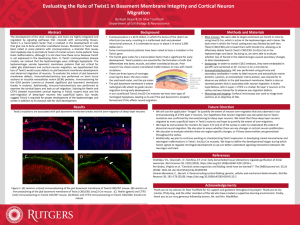Desai, Kush: Evaluating the Role of Twist1 in Basement Membrane Integrity and Cortical Neuron Migration
Title: Evaluating the Role of Twist1 in Basement Membrane Integrity and Cortical Neuron Migration
Name: Kush Desai
Major: Cell Biology and Neuroscience
School affiliation: School of Arts and Sciences
Programs: Division of Life Sciences Summer Undergraduate Research Fellowship (DLS-SURF)
Other contributors: Max Tischfield and Phillip Ang
Abstract: The development of the skull, meninges, and brain are highly integrated and regulated by signaling pathways that crosstalk with surrounding tissues. Twist1 is a transcription factor that is involved in the development of cells that give rise to bone and other craniofacial tissues. Mutations in Twist1 have been noted in some patients with craniosynostosis, a disorder that causes skull dysplasia due to premature fusion of cranial sutures. Some patients have brain malformations, although it is not clear how these occur because Twist1 is not expressed in the developing brain. In Twist1 craniosynostosis disease models, we noticed that the leptomeninges were strikingly hypoplastic. The leptomeninges secrete basement membrane proteins that are critical for radial glia attachment and cortical neuron migration, we hypothesized that loss of Twist1 would cause defects to pial basement membrane development and abnormal migration of neurons. To evaluate the extent of pial basement membrane defects, immunohistochemistry was performed on brain tissue sections to visualize extracellular matrix (ECM) proteins. Immunostaining for the ECM protein Laminin-a1 showed significant pial basement membrane breaks in mutants. Additionally, immuno-histochemistry was performed to examine the cortical layers and look at cell migration. Staining for Reelin and CTIP2 showed inconsistent cortical layering in Twist1 mutant mice and the over-migration of deep-layer neurons into superficial layers. Our results suggest Twist1 is required for proper development of the leptomeninges and cortex in addition to its classical role for skull development.
